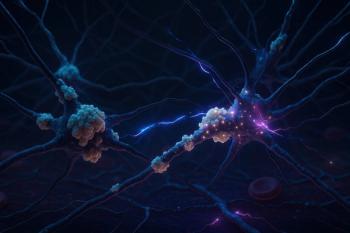
Women Are Diagnosed With ADHD 5 Years Later Than Men
Key Takeaways
- Women with ADHD are diagnosed about five years later than men, leading to worse clinical outcomes, including higher rates of depression and anxiety.
- Females with ADHD show higher symptom severity, worse psychosocial functioning, and greater disability compared to males.
New research reveals women with ADHD are diagnosed 5 years later than men, highlighting the need for improved awareness and early intervention.
CONFERENCE REPORTER
Attention-deficit/hyperactivity disorder (ADHD) in women is diagnosed approximately 5 years later than in men, despite symptoms appearing at the same age, says new research. Additionally, women with ADHD also endure emotional and functional difficulties than men.1,2 This work was presented at the 38th European College of Neuropsychopharmacology (ECNP) Annual Congress, on October 11-14, 2025, in Amsterdam.
“ADHD affects millions of people, but our understanding of how it presents and impacts males and females differently remains limited. We found that females are underdiagnosed, often receiving a diagnosis years later than males. This delay may lead to worse clinical outcomes, including depression, anxiety, and functional impairment. Males on the other hand showed a higher level of involvement in delinquent behaviours such as legal problems and driving-related difficulties. We believe that a better understanding these sex-based differences might improve diagnosis and treatment,” said lead researcher Silvia Amoretti, MD.
Investigators analyzed a large clinical sample of 900 adults (54.9% male, 45.1% female, average age 36.94) diagnosed with ADHD for the first time at a specialized outpatient program in Barcelona. Then, they assessed differences between males and females in terms of age at diagnosis, ADHD symptom severity, psychiatric comorbidities, psychosocial functioning, and disability. Participants went through a comprehensive clinical and psychological assessment, including semi-structured diagnostic interviews for ADHD and comorbidities. Results indicate that females are diagnosed with ADHD at an average age of 28.96 years, whereas males are diagnosed at age 24.13 on average, despite symptoms appearing in both males and females at approximately the same age. Males were around 3 times more likely to have encountered legal problems (18.1%) than were females (6.6%).
Additionally, females with ADHD had higher symptom severity (P<0.001), worse psychosocial functioning (P =0.039), and greater disability (P =0.001). They also exhibited higher rates of depression (P =0.003) and anxiety (P <0.001).
“We found that although ADHD symptoms started at a similar age in males and females, women were diagnosed about 5 years later. By the time of diagnosis, they showed more severe symptoms, worse functioning in daily life, and higher rates of depression and anxiety,” said Amoretti. “This is important because it shows that ADHD often goes unnoticed in women until it becomes a serious problem. Our findings suggest that we may be missing the early signs in girls and women, especially when their symptoms are less disruptive but still impactful. This has clear implications for earlier screening and sex-sensitive diagnostic tools.”
Amoretti believes women are diagnosed later due to how differently ADHD symptoms of ADHD manifest in men and women.
“We didn’t set out to compare the age of diagnosis in males and females, we were aiming to understand the general age when symptoms appear, regardless of sex. This finding was not part of our initial hypotheses but became evident during the analysis but became evident during the analysis, and the scale of the difference in diagnosis between the sexes was a surprise,” said Amoretti. “Boys are more likely to be hyperactive or impulsive, and this behavior is more visible to parents, teachers, and clinicians. On the other hand, girls with ADHD are more likely to seem inattentive and generally less disruptive. This becomes clinically important, as it means that women are just not treated early enough, and often are just not diagnosed at all. We have seen similar tendencies internationally, so it is likely that this is a global problem. The nature of the condition leads to poorer diagnosis in women everywhere, meaning that women can lose on average five years of treatment, 5 years of a better life.”
These results show that earlier detection and intervention in females with ADHD is needed, as it could promote adaptive coping strategies, reduce symptom impact, and prevent the development of comorbid psychiatric disorders in adolescence and adulthood.
“This study by Sylvia Amoretti and colleagues shows the delay in diagnosis in girls and women with ADHD compared with boys and males. Different presentation of symptoms, lack of awareness among clinicians that women have ADHD too, and the hormonal changes leading to severe mood instability in the last week of the cycle are all responsible for the gender differences in time to diagnosis of ADHD,” said JJ Sandra Kooij, MD, PhD, a psychiatrist and researcher in adult ADHD. “Increasing awareness in both society and medicine helps girls and women to get earlier help when they need it.”
References
1. Oltra-Arañó L, Crespín JJ, Corrales M, et al. Exploring sex differences in attention deficit hyperactivity disorder: a comparative study of onset, diagnosis, and symptom severity. Paper presented at: 38th European College of Neuropsychopharmacology Annual Congress; October 11-14, 2025; Amsterdam, The Netherlands. Accessed October 13, 2025.
2. ADHD: Women are diagnosed five years later than men, despite symptoms appearing at the same age. News release. October 13, 2025. Accessed October 13, 2025.
Newsletter
Receive trusted psychiatric news, expert analysis, and clinical insights — subscribe today to support your practice and your patients.














